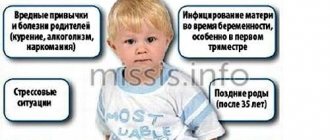A child's tantrum is a phenomenon that can begin unexpectedly and end just as unexpectedly. Ilona Gerashchenko - founder and leader of the international educational club Global Child offers 7 ways to help baby calm down
Illustrator: @Marta Everest Photography
Recently I saw this picture on the street. A mother and son (he looked about three years old) were walking down the street. I don’t know what caused the universal resentment, but the child screamed so loudly that the yard cats scattered. But the mother, on the contrary, was calm and unperturbed, as if she did not notice the sympathetic glances of passers-by and did not hear the baby’s deafening soprano.
After three minutes of screaming, she pointed her finger at the windowsill with the words: “Look, Mark, what a cat!” The tearfall immediately stopped.
Causes
The older the baby, the more personal desires and interests he has. Sometimes these views are at odds with what parents think. There is a clash of positions. The child sees that he cannot achieve what he wants and begins to get angry and nervous. Such tense situations provoke the appearance of hysterical states. We list the main factors influencing this:
- the baby is not able to declare and express his dissatisfaction;
- an attempt to attract attention to oneself;
- the desire to get something needed;
- overwork, hunger, lack of sleep;
- painful condition during the period of exacerbation of the disease or after it;
- an attempt to become like other children or to be like an adult;
- the result of excessive guardianship and excessive severity of parents;
- the child’s positive or negative actions do not have a clear reaction from adults;
- the system of rewards and punishments is poorly developed;
- when a child is taken away from some exciting activity;
- improper upbringing;
- weak nervous system, unbalanced behavior.
Having once seen something like this in their baby, parents often don’t know how to react and how to stop it? My only wish during attacks is for them to end as quickly as possible and not start again. Parents can influence their frequency. The duration of such situations will depend on their correct and rational behavior.
Errors in response will lead to unpleasant moments dragging on for many years. A calm reaction to hysterical attacks, the absence of a reaction as such, will reduce children's hysterics to “no” in the shortest possible time.
Specialist help
Usually, after 6-8 weeks of regular parenting, the tantrums end. But rarely does such behavior not only persist, but become frequent or complex. Tantrums are less common in 4-year-old children. Therefore, if attacks recur at this age, there is a risk of having a disease of the nervous system.
You should contact a neurologist if:
- increased frequency of attacks or severe aggression;
- a child fainting or holding his breath during a seizure;
- the appearance of hysterics in a child at 5 years old;
- the child’s desire to harm loved ones, peers or himself;
- night hysterics, accompanied by nightmares, screams, somnambulism;
- the end of a hysterical attack with shortness of breath, nausea, and severe loss of strength.
If after a medical examination no deviations are revealed, then the problem is probably in the child-parent relationship or inappropriate reaction of loved ones to the child’s behavior. You should not give children sedatives on your own. Such therapy can be harmful, so treatment should be performed only after examination by a neurologist and medications prescribed by him.
How to deal with tantrums worries many parents. This problem becomes especially acute when the child turns 3 years old. Experts believe that at this time such a phenomenon is not considered a deviation from the norm. This is a period of crisis. Typically, such seizures disappear with age. Parents need to find time to communicate with their children and learn to manage emotions. And most importantly, they show their unconditional love for the kids.
Difference from whims
Before you start fighting hysterical attacks, you should distinguish between the two concepts of “hysteria” and “whim”. Whims are deliberate actions aimed at obtaining what is desired, impossible or forbidden. Whims manifest themselves similarly to hysterics: stomping, screaming, throwing objects. Whims are often born where there is no way to fulfill them - for example, you want to eat candy, but there is none in the house, or go for a walk, and it’s raining outside the window.
Children's tantrums are characterized by involuntary behavior. The baby cannot cope with emotions, and this spills over into physical manifestations. Thus, in a hysterical state, a child tears out his hair, scratches his face, cries loudly or bangs his head against the wall. It can be stated that sometimes there are even involuntary convulsions, which are called “hysterical bridge”. A child in this state arches.
Features of this behavior
A historical attack manifests itself in the form of emotional arousal, aggressiveness, which is directed at others or oneself. The child cries, screams, falls to the floor or ground, knocks on the wall. At the same time, he is able to “disconnect” from the real situation: not hear the words of others and not feel pain.
In particularly difficult cases, involuntary convulsive reactions are observed, which are called “hysterical bridge”. The child's body is arched and the muscles are tense. It is important to distinguish between a hysterical attack and a whim. The first is involuntary. Capricious behavior is considered a deliberate step that is performed to possess something. Such techniques are usually used by children who are prone to manipulation.
Hysteria in children usually follows a similar scenario and consists of several stages. Each of them exhibits its own symptoms, which you need to know, as this will allow you to quickly eliminate the attack:
- Harbingers. First, the child expresses displeasure. For example, he whines, sniffles, is silent for a long time, or clenches his fists. At this time, hysterical behavior can be prevented.
- Voice. Children usually start screaming, and loudly. Demands to stop doing this will be futile.
- Motor. Active actions occur - throwing things, stomping, rolling on the ground or floor. This phase is especially dangerous, as it can lead to injury, and the child does not feel anything.
- Final. After “discharge”, children seek consolation from their parents. They get tired because the emotional shock takes a lot of energy.
Exhausted children quickly fall asleep, and their sleep will be deep. If you know how to stop a child’s hysterics, you can prevent all of these stages.
Stages of attacks
How do children's tantrums manifest themselves? 2-3 years – age characterized by the following stages of attacks:
| Stage | Description |
| Scream | The loud screams of a child frighten parents. In this case, no requirements are put forward. During the onset of another tantrum, the baby sees and hears nothing around. |
| Motor excitement | The main characteristics of the period: active throwing of things, stomping, hitting with legs, arms and head against the wall, floor. The baby does not feel pain at such moments. |
| Sobbing | The child's tears begin to flow. They simply flow in streams, and the whole appearance of the little one expresses resentment. A baby who has crossed the second stage and has not received consolation in it continues to sob for a very long time. Little ones have a very difficult time coping with the emotions that wash over them. Having received calm only at the last stage, the child will be completely exhausted and will express a desire to sleep during the daytime. He falls asleep quickly, but sleeps restlessly at night. |
When hysterical, a child may fall to the floor and arch, which is especially shocking to unprepared parents
The weak and unbalanced type of the child’s nervous system is most susceptible to severe attacks. Hysterical manifestations also occur before the age of 1 year. They are characterized by heart-rending, prolonged crying. What can cause this condition? The reason can be even a minimal error in care: the mother did not change her wet pants, a feeling of thirst or hunger, a need to sleep, pain from colic. Such children are characterized by constant waking up at night. A one-year-old baby may continue to cry for a long time, even if the causes have already been eliminated.
Ignore his tantrum
If the baby feels weak, then he begins to actively use it. For example, my mother said that she couldn’t eat ice cream before lunch, but after 5 minutes of the child’s crying, she gave him the entire glass of the required sweetness. This means: mom doesn’t always do what she says. And this is not what both the baby and the mother need.
The best way is to allow your child to scream and cry. You should move away from him, but so that you are in his field of vision, so that the baby does not think that you abandoned him, as this will only worsen his hysteria. Tell your baby: “If you want to scream, scream.” Do not pay attention to those around you, because it is not they who are raising your child, but you. Therefore, the education process should work according to the same scheme, both in public and at home.
Tantrums in a child aged 1.5-2 years
Children as young as one and a half years old throw tantrums due to emotional overstrain and fatigue. A psyche that is not fully established gives such results, but the older the child, the more conscious his hysterical attacks are. In this way he manipulates the feelings of his parents, achieving his goals.
By the age of 2, a grown-up baby already understands well how to use the words “I don’t want”, “no” and understands the meaning of the phrase “you can’t”. Having realized the mechanism of their action, he begins to apply them in practice. A two-year-old cannot yet verbally express his protest or disagreement, so he resorts to a more expressive form - hysterical fits.
The aggressive and unbridled behavior of a 1-2 year old child shocks parents; they do not know what the correct reaction will be. The baby screams, waves his arms, rolls on the floor, scratches - all these actions require an adequate reaction from adults. Some adults succumb to provocations and fulfill all the wishes of the little one, and another part resorts to physical punishment in order to wean them from this in the future.
When hysterical, a child can become aggressive and unbridled, but parents should not panic and follow the lead of the little dictator
Correct response: what is it?
What should be the reaction to hysterical attacks of a two-year-old? The basis is often a whim, expressed in the words “I won’t”, “give”, “I don’t want”, etc. If you fail to prevent a hysterical attack, put aside thoughts about calming your child. Also, you should not reason with him or scold him, this will only further inflame his impulse. Don't leave your child alone. It is important to keep him in sight, so the baby will not be scared, but will remain confident.
Once you give in to the baby, you risk having this happen again. Do not contribute to the consolidation of this skill, do not follow the lead. Once he feels that the child is achieving his goal with his behavior, he will resort to this method again and again.
A one-time weakness in an adult can turn into a long-term problem. It’s also not worth beating or punishing a child; physical pressure will not bring results, but will only worsen the child’s behavior. Completely ignoring children's hysterics really helps. Seeing that his efforts are in vain and if they do not bring the desired result, the child will refuse this method of influence.
You can gently and calmly reassure him by telling the baby how much you love him, while hugging him tightly and holding him in your arms. Try to be more dear and gentle, even if he gets very angry, screams or knocks his head. Do not forcefully restrain a toddler who is escaping from your embrace. In a situation where the baby is hysterical because he does not want to stay with someone (with his grandmother, with his teacher), then you should leave the room as quickly as possible, leaving him with an adult. Delaying the moment of separation will only prolong the process of child hysteria.
Tantrums in public places
It is very difficult for parents to control the process of hysterical demands in public places. It is much easier and safer for a 2-year-old child to give in in order to stop the noise and establish calm, but this opinion is extremely erroneous. The sidelong glances of others should not worry you at this moment; the most important thing is the same reaction to similar actions.
Termination methods
How to stop a child's tantrum? If the attack has not yet gone far, then the child must be distracted by an unusual object or a sudden action. This method often works to improve the child's mood. How else to stop hysteria in a child 2 years old and older? There are many ways to do this. Here are some of them:
- How to stop a 4-year-old child from hysterics? Don't panic and don't show that this behavior hurts you. It is important to monitor your emotions, as shouting and aggression can increase the intensity.
- It is necessary to show that tears and screams do not affect you. You need to ask the child to calmly say what he wants. If the attack intensifies, it is advisable to leave the room and discuss this behavior after some time.
- How to stop hysterics in a 3 year old child? At this age, children often play in public. You can stop this behavior by eliminating the “spectators.” At home, the baby should be left alone in the room. And in public places you should find a secluded place.
Tantrums in a 3 year old child
A 3-year-old child wants to be independent and feel mature and independent. The baby already has his own desires and wants to defend his rights before adults. Children of 3 years are on the verge of new discoveries and begin to feel like a unique individual; they can behave differently in such a difficult period (we recommend reading: how does a child’s 3-year-old crisis manifest itself and how to cope with it?). The main characteristics of this stage are negativism, stubbornness and self-will. Tantrums in a 3-year-old child often discourage parents. Just yesterday their little one did everything with joy and pleasure, but today he does everything in defiance. Mom asks to eat soup, and the baby throws the spoon, or dad calls to him, and the child persistently ignores these requests. It seems that the main words of a three-year-old become “I don’t want”, “I won’t”.
We go out to fight hysterics
How to deal with children's tantrums? When weaning your child from this harmful activity, it is important not to concentrate your attention on his bad actions. Give up the desire to break his character, this will not lead to anything good. Of course, allowing a child to do whatever he wants is also unacceptable. How then to deal with this disaster? The child must understand that hysteria does not help achieve any results. Wise grandmothers and mothers know that the best way in such cases is to switch children's attention to something else, to distract it. Choose interesting alternatives: watch your favorite cartoon or study or play together. This method will not work if the baby is already at the height of hysteria. Then the best thing is to wait it out.
When showing tantrums at home, clearly formulate your idea that any conversations with him will only be after he calms down. At this moment, do not pay any more attention to him and do household chores. Parents should set an example of how to control their emotions and remain calm. When the baby calms down, talk to him and tell him how much you love him and that his whims will not help achieve anything.
When whims happen in a crowded place, try to take or take the child to a place where there will be fewer spectators. Regular tantrums in your baby require a more attentive attitude to the words you say to the child. Avoid situations where the answer to your question may be no. You shouldn’t say categorically: “Get dressed quickly, it’s time to go outside!” Create the illusion of choice: “Will you wear a red sweater or a blue sweater?” or “Where would you like to go, to the park or playground?”
Approaching the age of 4 years, the child will change - children's tantrums will subside and pass as suddenly as they appeared. The baby is reaching the age when he already has the ability to talk about his desires, emotions and feelings.
Sometimes a regular cartoon helps distract a child and redirect his attention.
Why is the child hysterical?
Many experts talk about hysterics as a learned way of manipulating parents. Like, now my legs are kicking, my mother will be confused, scared and will quickly buy me a toy. Or he will take me to the site where I want. Or he’ll turn on cartoons again.
Yes, such behavior does occur, but here we are not talking about very young children (1-2 years old), and such repetitions occur after earlier positive reinforcement. That is, if a couple of times in the name of stopping the hysteria the child’s whims were instantly satisfied, the baby will try to repeat the operation at least once more. And, achieving his goal over and over again, he will make hysteria one of the accessible and understandable models of behavior, which has a completely predictable end and real “bonuses”.
But why does a child have a tantrum for the first time? Everything seemed to be fine, no one taught me any manipulations. But the previously obedient and sweet little one suddenly begins to behave inappropriately? There are several very compelling and significant reasons for this. Let's look at the main ones.
Physical discomfort
The baby may be hungry, want to go to the toilet, or thirsty. But due to the impossibility of quickly conveying his condition to the parent in another, more constructive way, the child reports this as best he can.
Overexcitement
This is not uncommon in our troubled times. We try in every possible way to add as many emotions as possible to the baby’s life, not noticing the moment at which his not yet fully formed nervous system is no longer “pulling.”
Fatigue
Yes, we all know that when a child is tired, he can fall asleep on the go. But sometimes there is no such opportunity. So, if on a weekend we packed the “cultural program” to capacity, trying to give as much as possible - a circus, a walk in the park, and ice cream with friends. For a three-year-old child, such a “race” in most cases will be interrupted by hysterics. After all, you want to continue the fun, but you no longer have the strength.
Lack of attention
If mom and dad are used to reacting emotionally only to negative manifestations of the baby, you should expect hysterics. You have to get attention somehow!
Anger and fear
Yes, a child, even a very small one, has the right to emotions. Including negative ones. He may be angry with mom, dad, the teacher and the children in the kindergarten. He may be indignant and angry. Fear of being alone, of being unwanted, of being screamed at. Especially if the parents' attention escapes.
Resentment
Yes, children can also remember that their mother promised something, but did not do it. Or she pulled it too roughly. How many reasons could there be?
Overprotection
Often mothers sin by not wanting to understand that the child is growing and needs a certain amount of independence. If you try to sit “heeled” over a grown-up child, limiting his activities in every possible way and trying to decide and do everything for him, you may well run into hysterics. How else can you let your mom understand that she’s already tired of this?
Inconsistency among adults in matters of permission and prohibition
This is generally a very important question. If one person prohibits, and the other allows, it is difficult for the child to navigate, but what is the right thing to do? So he “goes out” due to hysterics.
Tantrums in a 4 year old child
Often we, adults, ourselves provoke the appearance of whims and hysterics in children. Permissiveness, lack of boundaries and concepts of “no” and “no” do a disservice to the child. The baby falls into the trap of parental carelessness. So, 4-year-old children perfectly sense weakness and if mom says “no,” then grandma can allow it. It is important for parents and all raising adults to agree and discuss what is permitted and prohibited, as well as inform the child. After this, you should strictly adhere to the established rules. All adults must be united in their methods of education and not violate the prohibitions of others.
Komarovsky claims that frequent children's whims and hysterics may indicate the presence of diseases of the nervous system. You should contact a neurologist or psychologist for help if:
- there is an increased occurrence of hysterical situations, as well as their aggressiveness;
- there is a disturbance or interruption of breathing during attacks, the child loses consciousness;
- tantrums continue after 5-6 years of age;
- the baby hits or scratches himself or others;
- hysterics appear at night in combination with nightmares, fears and frequent mood swings;
- After an attack, the child experiences vomiting, shortness of breath, lethargy and fatigue.
When doctors determine the absence of any diseases, the cause should be sought in family relationships. The baby's immediate environment can also have a great influence on the occurrence of hysterical attacks.
How to prevent a child from hysterics?
What we talked about before is already an ambulance when hysteria sets in. When you just need to do something. But, as in any matter, it is better to prevent hysteria. What preventive measures are there?
Experts most often call these:
- Timely satisfaction of the child's needs . I don’t think there’s much need to explain here. Make sure that the baby is well-fed, watered on time, and dry. For a long walk, take a change of clothes and brakes with you. Make sure your child can rest when he gets tired. And don't overload him emotionally.
- Reasonable freedom . This term means the absence of unnecessary prohibitions, where they can be avoided. If possible, encourage the child's independence. Giving him the right to choose in simple matters when this does not affect the safety and health of the child and others. You can easily ask your child the question: “Which blouse will you wear today – red or blue?” And let him choose. It doesn’t matter to you, but it’s nice for the child. After all, he chose it himself! Yes, the mother also needs to prepare for such a choice, and offer the child only those blouses that are suitable for the season. So that later you don’t have to quarrel and swear.
- Voice your feelings and desires to your child . After all, if you don’t teach him this, then who will? Be honest that you don’t feel well right now, and because of this you can’t play with him yet. Ask not to make noise, as your little sister has just fallen asleep and will be upset if you wake her up. Using such simple examples, you will teach your child to voice what is happening to him. And hysteria may not be necessary.
- Storm Prevention . If you feel a hysteria approaching - the child becomes tense, begins to whine, and is capricious - try to switch the attention of the baby, to interest him in something, to captivate him. Voice to him: “Baby, I understand that you are tired and upset. Let's take a little walk and then read a book together."
Very soon you will notice that there will be fewer hysterics. As well as reasons for them. After all, if mom and dad already understand that it’s good and healthy to be with them, why force yourself?
Prevention
How to deal with children's tantrums? It is important for parents to catch the moment close to an attack. Perhaps the baby purses his lips, sniffles or sobs slightly. Having noticed such characteristic signs, try to switch the baby to something interesting.
Distract your child's attention by showing the view from the window or changing the room with an interesting toy. This technique is relevant at the very beginning of a child’s hysteria. If the attack is actively developing, this method will not produce results. To prevent hysterical conditions, Dr. Komarovsky gives the following advice:
- Compliance with rest and daily routine.
- Avoid overwork.
- Respect the child’s right to personal time and allow him to play for his own pleasure.
- Put your child's feelings into words. For example, say: “You’re upset that they took your toy” or “You’re angry because mom didn’t give you candy.” This way you will teach your child to talk about his feelings and give them verbal form. Gradually he will learn to control them. Once you have set boundaries, make it clear that their violation will not be tolerated. For example, a baby screams in public transport, you explain: “I understand that you are angry with me, but screaming on the bus is unacceptable.”
- Do not help your child do things that he can do on his own (take off his pants or go down the stairs).
- Let your child choose, for example, what jacket to wear when going outside, or what playground to go for a walk.
- Assuming there is no choice, express it like this: “Let's go to the clinic.”
- When your baby starts crying, distract him by asking him to find an object or show him where something is.
Clinical and perinatal psychologist, graduated from the Moscow Institute of Perinatal Psychology and Reproductive Psychology and Volgograd State Medical University with a degree in clinical psychology More details »
What are the causes of children's tantrums?
For children under 4-5 years old, hysteria is a crisis reaction to an unbearable situation that cannot be stopped and accepted. The nervous system cannot withstand the tension to survive anger, rage and despair - the body throws a tantrum.
In this state, the child does not perceive information from the outside; he, as it were, “reboots the system” and is “temporarily unavailable.” After strong emotions find a way out and the hysteria subsides, the stage of grief begins, when a person seeks consolation and support from loved ones, goes to make peace and wants to be held.
In any case, there is always a reason for tears, screaming and other violent reactions. Below are the most common causes of children's tantrums.
Year 1 crisis
Up to a year, children's crying is easily explained by physiological needs and discomfort. A crying baby can be easily distracted and occupied with a toy. And as the child approaches one year of age, he becomes nimble, wants to do things himself, imitating adults, wants to feel useful. This is how a little person learns the rules of behavior in the family and society and learns important skills.
But a one-year-old child may be putting himself or others in danger. This worries parents, they set rules and prohibit many things.
When faced with restrictions, the child experiences frustration. His need cannot be satisfied right now. Oh, how angry this is!
To survive anger, the baby screams and falls to the ground, turns red, kicks the floor, knocks down walls with his forehead, and fights.
Crisis 3 years
A three-year-old child looks like a small teenager. He is gradually separating from his mother and already has his own opinion about everything that happens, he wants to make decisions himself, he wants his opinion to be taken into account.
Defending his “I”, a three-year-old person refuses previously loved and familiar things only because adults suggested it - he shows negativism.
At the same time as negativism, the child displays unprecedented stubbornness. If he has already asked for candy, he will not refuse this desire. Even if he has long since stopped wanting candy and wants soup, he will never admit it and will continue to demand candy.
Lev Semenovich Vygotsky said about three-year-olds: “The child is in a state of war with those around him, in constant conflict with them.”
Conflicts in the family
When significant people quarrel, the child experiences severe stress, even if the conflict is sluggish and does not manifest itself in any way to the child - the tension accumulates, and the release occurs in hysterics. It happens that a child unconsciously “distracts” adults from the conflict with intolerable behavior and hysterics.
Changes in the usual way of life
Moving, kindergarten, illness, loss of friends or loved ones - at such moments the child needs more attention and care.
Need for love and attention
If the time spent with parents is not enough, or it passes without quality and active communication. Such hysteria is a manifesto: “Notice me, I’m here, I need you!” How to calm a child's hysteria caused by lack of attention? A simple game together, a heart-to-heart conversation, reading or a walk is enough to feel closeness with your parents. But some children need constant involvement and attention from adults, this is worth taking into account.
How to react to hysteria?
When a child is in a state of passion, he does not control himself and feels quite bad. A parent can be “infected” by the affect and become angry, feel despair and then this: “Well, as long as you can, you start again?” Some parents are ashamed of their child’s “such behavior.” It is natural to feel irritated and even angry at your child because of his tantrum. What to do with children's tantrums?
- Think about yourself at this moment, find support in your body. If you manage to notice your emotions, track bodily sensations, and concentrate on them, then you will be able to remain for the baby the same adult who will protect and take care. It's not easy, it's a skill that takes effort, but it's important to try. Where does it drag, where does it ache, what hurts? Maybe a migraine is happening, or teeth are clenching? Notice these body reactions, observe them - and now you can breathe deeper, calmer.
- If there are two parents, or there are close people nearby to whom the child is attached, then it makes sense for the most angry and confused person to simply pull away, leave and calm down away from the screams and tears.
- Accept your helplessness. It happens that despair makes a parent panic and fuss, creating unnecessary noise, which only intensifies the child’s hysteria. “Should I wash you? Blow? Hug?". Sometimes you can give up. Well, he lies and cries on the floor. It may be more convenient to cry and suffer. But did you settle in well? If you lie down next to her and whine quietly, the world will not collapse. And the child will be surprised.
- Many adults, in such tense moments, think that all the other children in the world are wonderful, that they never behave so creepily, that this particular child is simply mocking and acting up “to spite them.”
If it was not possible to restrain the parental anger, then it is worth explaining to the child why the parents were angry, saying that it was not his fault, that he will grow up and such situations can be avoided. Almost certainly.
Sources:
https://www.psychologies.ru/roditeli/children/7-sposobov-ostanovit-detskie-isteriki/ https://psychbook.ru/418994a-kak-ostanovit-isteriku-u-rebenka-psihologicheskie-metodyi-i- sposobyi-osobennosti-vospitaniya https://opsihike.ru/deti/detskaya-isterika.html
Is it possible to prevent hysteria?
Stopping a hysteria that has already begun is as difficult as stopping a train at full speed. But here are some ideas on how to respond to children's tantrums:
- Make sure your child eats and rests when he wants. Find a rhythm in which he feels calm and confident, when everything is predictable and understandable. Maintain this rhythm. Do not take a tired, hungry or sleepy child to the shops, for long walks, or to activities that require concentration.
- Give the child the right to say “no” if this refusal does not infringe on the interests of other people and does not entail dangerous consequences. This teaches you to take responsibility for your decisions.
- Speak out the child’s wishes and emotions, especially if he is still too young to voice and be aware of them. “You want the eighteenth car,” “You’re very angry with your mom,” “You’re sad because dad left,” “You’re hungry and that’s why you’re in such a bad mood.” Describing what is happening helps relieve general tension, gives a feeling of security and confidence in the adult, and helps prevent an outburst of uncontrollable feelings.
- Provide space to express anger safely. Allow your child to scream and swear, tear and crumple paper, hit a beach ball, run and jump when he is angry. Don’t scold for anger: “Don’t behave so badly, stop yelling!”, but understand the reasons for anger, and later talk about this feeling, you can even use examples from personal experience, tell what happened to your mother when she herself was four. Perhaps the idea that this little person is just learning to cope with complex negative emotions, and not all adults know how to do this, will be useful.
- Play. Any real conflict situation can be played out later with the child and his toys. Try different models of behavior, give vent to accumulated emotions, let go of control and imagine any development of events.
The game provides an opportunity to change roles, acquire the necessary self-regulation skills and understand others.











